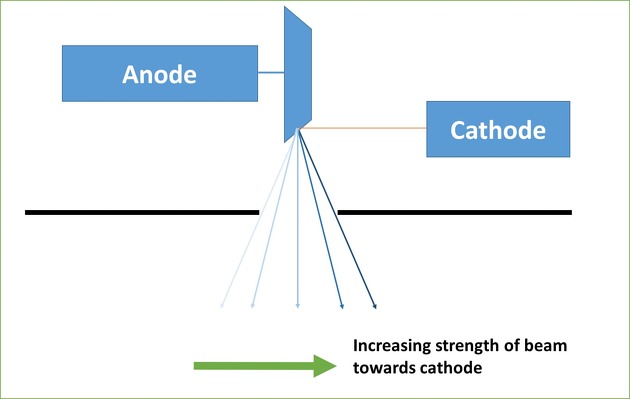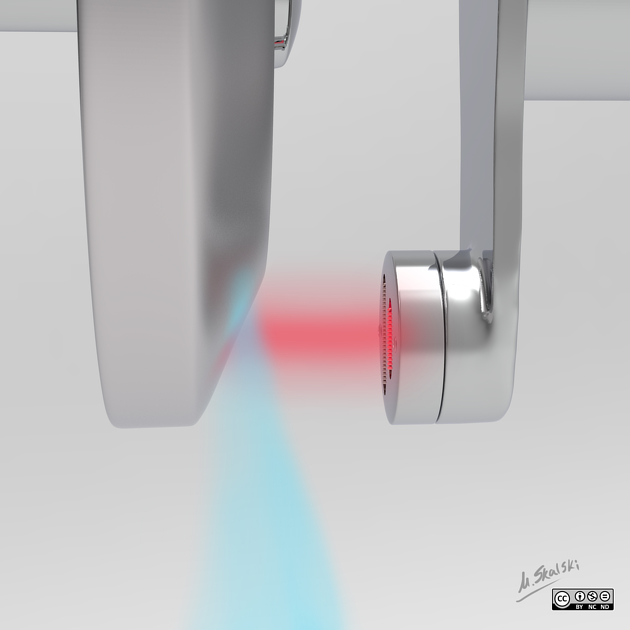Anode heel effect refers to the lower field intensity towards the anode in comparison to the cathode due to lower x-ray emissions from the target material at angles perpendicular to the electron beam.
On this page:
Basic concept
The conversion of the electron beam into x-rays doesn’t simply occur at the surface of the target material but deep within it. Because x-rays are produced deep in the target material they must traverse back out of it before they can proceed to the target field. More target material needs to be traversed at emission angles that are perpendicular to the electron beam (closer to the anode) than at those more parallel to it (closer to the cathode). This increase in material leads to more resorption of the x-rays by the target material resulting in fewer x-rays reaching the field at angles perpendicular to the electron beam. It also means that the x-rays emitted to angles closer to the incident beam travel through less target material and fewer are resorbed.
The end result is that the field intensity towards the cathode is more than that towards the anode.
Factors
anode angle: by increasing the angle, the amount of target material perpendicular to the anode is decreased resulting in less resorption of x-rays produced
target-to-film distance: increase in distance reduces heel effect by allowing more divergence of the beam which produces a more uniform image
field size: the field will be more uniform at the centre (i.e. smaller field size) due to the collimator absorbing the peripheral variations
positioning: by aligning higher attenuating material towards the cathode and lower attenuating material towards the anode the resulting field is more uniform
Applications
Anode heel effect can benefit in X-ray imaging by aligning the anode-cathode axis parallel to thinner-thicker sections of the patient's body, thereby equalising the patient's exposure to X-rays and producing a more uniform image. Utilising the anode heel effect in this manner has demonstrated improvements in the imaging of kidneys, ureter, and bladder (KUB), skull, chest, pelvis, abdomen, thoracic, lumbar, and extremities 2.
Mammography also utilises the anode heel effect to its advantage by aligning the cathode close to the thoracic wall (thicker and denser) and anode close to the nipple (thinner) 3.






 Unable to process the form. Check for errors and try again.
Unable to process the form. Check for errors and try again.